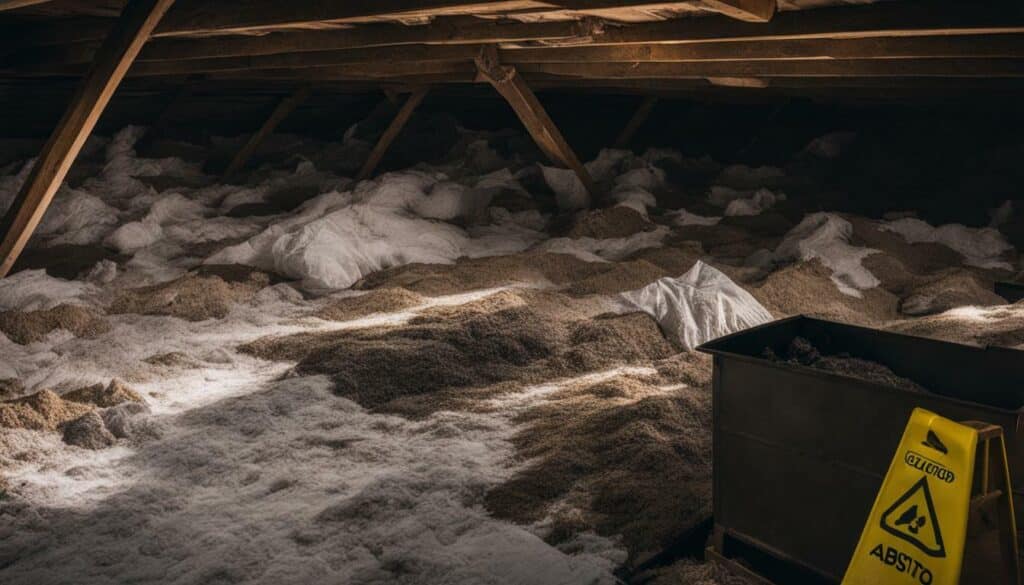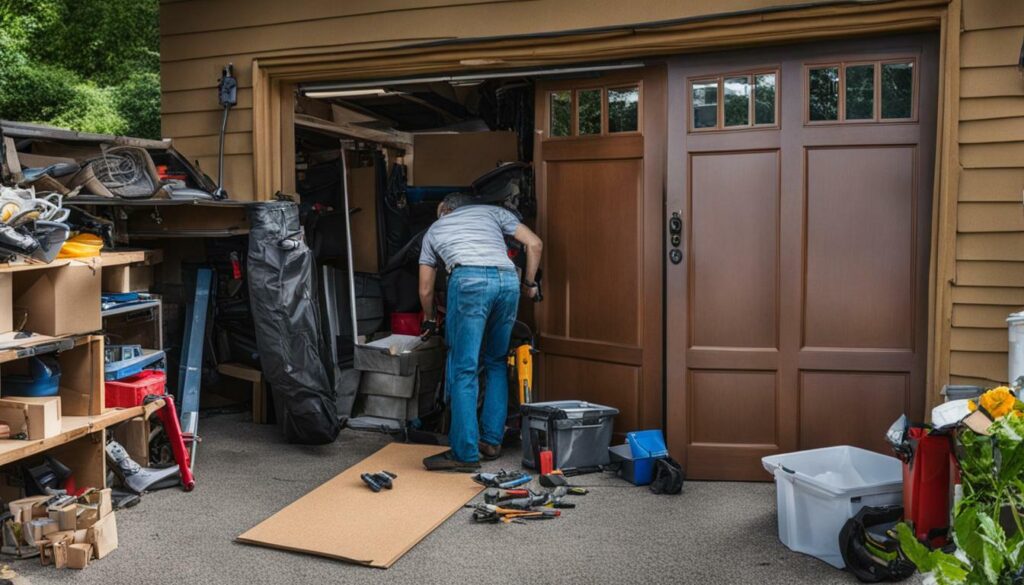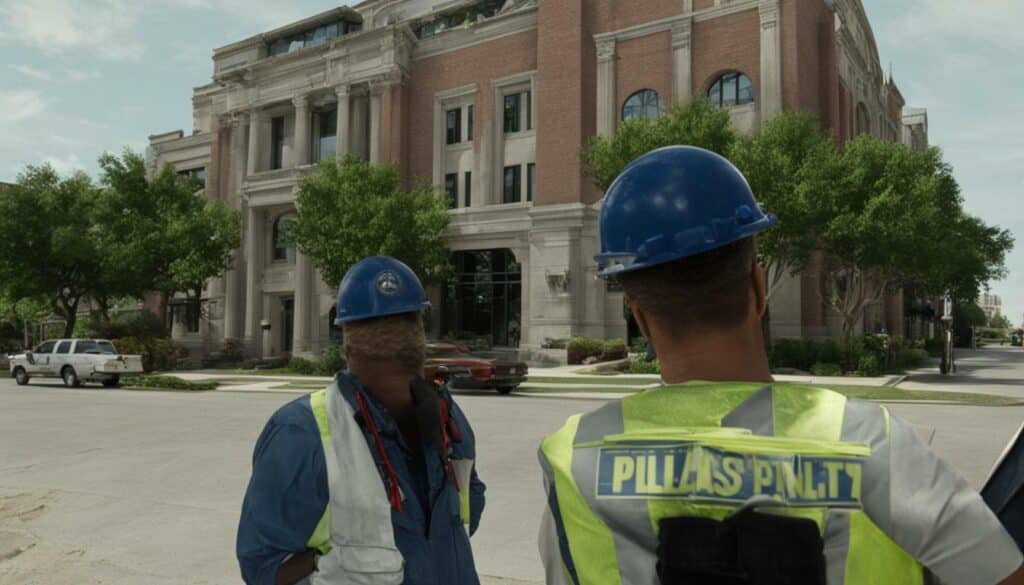
Key Takeaways:
- Traffic congestion and lack of public transportation are major challenges in Dallas.
- The weather in Dallas can be extreme, with hot summers and cold winters.
- The cost of living in Dallas is relatively high.
- Dallas has a relatively high crime rate and lacks cultural diversity.
- Limited job opportunities and a growing homeless population are concerns in the city.
Despite these drawbacks, Dallas has the potential for improvement. Initiatives such as improving public transportation, prioritizing security, and making goods and services more affordable can address these issues. The city also offers world-class restaurants, nightlife, and cultural attractions, making it a city worth considering despite its challenges.
Traffic Congestion and Lack of Public Transportation in Dallas
One of the major downsides of living in Dallas is the traffic congestion that plagues the city, exacerbated by the lack of an efficient public transportation system. Commuters and residents alike face daily challenges navigating the city’s busy streets, resulting in long travel times and increased frustration. Without a comprehensive network of buses, trains, or trams, Dallas residents are mostly reliant on their cars, exacerbating traffic congestion and adding to the city’s pollution levels.
This lack of public transportation not only affects daily commuters but also impacts the overall quality of life in Dallas. Without convenient and accessible public transportation options, transportation costs can become a burden for residents, especially for those who cannot afford a car or choose to live a car-free lifestyle. Furthermore, the absence of a well-connected public transportation system restricts mobility and limits opportunities for residents to explore different parts of the city or access essential services and amenities.
In order to alleviate the traffic congestion and improve the transportation options in Dallas, investment in public transportation infrastructure is essential. Implementing an extensive network of buses, light rail, and commuter trains can offer residents an alternative to driving, reducing traffic congestion, and easing the strain on the city’s roads. Additionally, creating more pedestrian-friendly infrastructure and promoting cycling as a viable mode of transportation can further enhance mobility and reduce the reliance on cars.
Quotes on Traffic Congestion:
“The traffic in Dallas is a nightmare, especially during rush hour. It can be incredibly frustrating to spend hours on the road just to travel a few miles.” – A Dallas resident
“The lack of public transportation in Dallas makes it difficult for those without a car to get around the city. It’s a real barrier to mobility and limits opportunities for many residents.” – Another Dallas resident
| City | Population | Public Transportation Score |
|---|---|---|
| Dallas | 1.3 million | 4.3 |
| Chicago | 2.7 million | 8.7 |
| New York City | 8.4 million | 9.8 |
| Los Angeles | 3.9 million | 5.9 |
In conclusion, the traffic congestion and lack of public transportation in Dallas present significant challenges to its residents. However, with the right investments and initiatives, the city has the potential to improve its transportation infrastructure and enhance quality of life for its residents. By prioritizing public transportation options, promoting alternative modes of transportation, and creating a more connected and accessible city, Dallas can address these issues and pave the way for a more efficient and sustainable future.
Weather Extremes and Expensive Cost of Living in Dallas
The weather in Dallas can be quite extreme, with scorching hot summers and occasionally harsh winters, which can be a challenge for residents. The sweltering heat during summer months often reaches triple-digit temperatures, leaving residents seeking refuge indoors or in air-conditioned spaces. Conversely, winter brings colder temperatures and occasional icy conditions, making it essential for residents to be prepared and adaptable to rapidly changing weather patterns.
In addition to the weather, the cost of living in Dallas is relatively high, making it difficult for some to afford a comfortable lifestyle. Housing prices have risen steadily over the years, resulting in limited affordable options for individuals and families. The increased cost of housing is coupled with higher expenses for groceries, utilities, and transportation, which can put a strain on residents’ budgets.
Despite the challenges posed by the weather and cost of living, Dallas offers a vibrant and diverse cityscape that attracts residents and visitors alike. The city boasts a thriving culinary scene, with world-class restaurants offering a variety of cuisines. Additionally, Dallas has a vibrant nightlife, with numerous bars, clubs, and entertainment venues to choose from.
Furthermore, Dallas is home to a wide range of cultural attractions, including museums, art galleries, theaters, and music venues. Residents can immerse themselves in the city’s rich history and art scene, providing ample opportunities for cultural enrichment.
Crime Rate and Lack of Cultural Diversity in Dallas
Dallas has a higher crime rate compared to other cities, which can be a concern for those looking for a safe place to live. According to recent statistics, the crime rate in Dallas is above the national average, with property crimes and violent crimes being particularly prevalent. While efforts have been made to improve public safety, the city still faces challenges in reducing crime rates and ensuring the well-being of its residents.
In addition to the high crime rate, the lack of cultural diversity in Dallas can limit the experiences and perspectives available in the city. While Dallas is known for its southern charm and hospitality, it falls short in terms of cultural representation. The city has a predominantly white population, with limited representation from other ethnicities and cultures. This lack of diversity can lead to a homogenous environment and hinder opportunities for cross-cultural understanding and appreciation.
| Concerns | Solutions |
|---|---|
| High Crime Rate | Improve community policing strategies and increase resources for law enforcement |
| Lack of Cultural Diversity | Promote diversity and inclusion initiatives, support cultural events and festivals |
Despite these challenges, Dallas has the potential to address these issues and become a more vibrant and inclusive city. By investing in community-oriented policing strategies and providing resources for law enforcement, the city can work towards reducing crime rates and improving public safety. Furthermore, by promoting diversity and inclusion initiatives, Dallas can create a more welcoming environment for people from diverse backgrounds and cultures.
Limited Job Opportunities and Growing Homeless Population in Dallas
Finding suitable job opportunities in Dallas can be challenging, leading to limited career prospects for residents. The city’s job market is highly competitive and saturated, making it difficult for individuals to secure stable employment. With a growing population and limited job growth, many residents find themselves struggling to find work that matches their qualifications and skillset. This issue is further exacerbated by the economic impact of the COVID-19 pandemic, which has resulted in layoffs and reduced job opportunities across various sectors.
Unfortunately, the limited job opportunities in Dallas contribute to another visible issue – the growing homeless population. The lack of affordable housing and the high cost of living in the city force many individuals and families into homelessness. According to recent data, Dallas has one of the highest homeless populations in the United States, with thousands of people living on the streets or in temporary shelters.
To address these challenges, Dallas needs to focus on creating more job opportunities by attracting new industries and fostering an environment that supports entrepreneurship. Local government and businesses can work together to offer training and educational programs that equip residents with the skills needed for in-demand professions. Additionally, affordable housing initiatives and support services for the homeless population should be prioritized to provide stable living conditions and pathways out of homelessness.
| Key Challenges | Potential Solutions |
|---|---|
| Limited job opportunities | – Attracting new industries – Supporting entrepreneurship – Offering training and education programs |
| Growing homeless population | – Implementing affordable housing initiatives – Providing support services for the homeless |
Quote:
“Addressing the limited job opportunities and growing homeless population in Dallas requires a collaborative effort from both the public and private sectors. By focusing on job creation, skills development, and affordable housing initiatives, we can create a more inclusive and prosperous city for all residents.”
Despite these challenges, Dallas is not without its potential. The city boasts a vibrant economy, cultural diversity, and a range of world-class attractions. By addressing the issues of limited job opportunities and the growing homeless population, Dallas can unlock even more of its potential and become a thriving city that offers a high quality of life for its residents.
Inadequate Waste Management and No Nearby Oceans or Mountains in Dallas
Dallas faces challenges in waste management, with concerns about inadequate practices and their environmental impact. The city’s current waste management system struggles to efficiently handle the increasing volume of waste generated by its growing population. This not only poses risks to public health but also contributes to pollution and degradation of the environment.
Furthermore, the absence of nearby oceans or mountains can limit outdoor recreational opportunities for residents. Dallas, located in the heart of Texas, is known for its flat terrain and lack of natural landscapes. While the city offers beautiful parks and green spaces, the absence of mountains for hiking and skiing or the nearby oceans for beach activities can be disappointing for nature enthusiasts.
“The inadequate waste management practices in Dallas are a pressing issue that needs urgent attention. It is crucial for the city to invest in sustainable waste management solutions to ensure a cleaner and healthier environment for its residents.”
Addressing the issue of inadequate waste management requires a comprehensive approach. Dallas needs to invest in infrastructure and technologies that promote recycling and reduce landfill waste. Implementing educational campaigns to raise awareness about waste reduction and proper disposal methods can also play a vital role in improving waste management practices.
| Steps to Improve Waste Management | Benefits |
|---|---|
| Investing in recycling facilities and programs | Reduces the amount of waste sent to landfills and promotes a more sustainable environment |
| Implementing stricter regulations on waste disposal | Ensures proper waste management practices and prevents pollution |
| Encouraging residents and businesses to adopt sustainable practices | Leads to a reduction in waste generation and promotes a culture of environmental responsibility |
While waste management is a significant concern, it’s important to note that Dallas has other positive aspects to offer. The city is home to world-class restaurants, vibrant nightlife, and a thriving arts and culture scene. Additionally, Dallas is constantly evolving and has the potential to address these challenges and improve the overall quality of life for its residents.
Improvements and Potential in Dallas
While Dallas has its downsides, steps can be taken to improve the city’s living conditions, such as investing in public transportation and enhancing security measures. Moreover, Dallas offers a vibrant culinary scene, vibrant nightlife, and cultural attractions that showcase its potential for growth and development.
Investing in public transportation is crucial in reducing traffic congestion and providing residents with reliable and convenient commuting options. By expanding the existing public transportation system, Dallas can encourage more people to use public transit, reducing the number of cars on the road and easing traffic congestion. This would not only make commuting more efficient but also contribute to a cleaner and greener environment.
Another area for improvement is security. Dallas can prioritize safety by increasing police presence in high-crime areas and implementing community-based initiatives. By providing a safer environment, residents can feel more secure, fostering a sense of community and attracting businesses and investments.
| Improvements in Dallas | Potential in Dallas |
|---|---|
| Investing in public transportation | Expanding cultural attractions |
| Enhancing security measures | Attracting businesses and investments |
| Creating more public spaces | Growing the arts and entertainment industry |
“Dallas has the potential to become a thriving city with a robust economy, diverse culture, and enhanced quality of life. By addressing the challenges and investing in improvements, Dallas can transform into a more livable and attractive destination for both residents and visitors.”
Furthermore, Dallas has the opportunity to grow its cultural attractions, fostering a more vibrant arts and entertainment industry. By investing in museums, theaters, and art galleries, Dallas can attract tourists and locals alike, providing a platform for artists and performers to showcase their talent.
In conclusion, while Dallas faces several challenges, such as traffic congestion, a high cost of living, and a lack of cultural diversity, the city has immense potential for improvement. By prioritizing investments in public transportation, enhancing security measures, and expanding cultural attractions, Dallas can transform into a more livable and attractive city. With its vibrant culinary scene, nightlife, and cultural attractions, Dallas is a city that offers a blend of opportunities and potential for growth and development.
Conclusion
In conclusion, living in Dallas has its challenges, from heavy traffic congestion to a high cost of living and a relatively high crime rate. However, with initiatives to improve public transportation, enhance security measures, and address other issues, Dallas has the potential to become an even better place to live.
One of the key areas that Dallas can focus on is improving its public transportation system. By investing in infrastructure and expanding public transit options, the city can alleviate traffic congestion and provide residents with more convenient and sustainable transportation choices. This will not only reduce commute times and ease the burden on roadways but also contribute to a cleaner and greener environment.
Enhancing security measures is another crucial aspect for Dallas to consider. By prioritizing safety and implementing proactive strategies, the city can effectively combat the high crime rate. This includes increasing police presence, improving neighborhood watch programs, and fostering community engagement. Creating a safer environment will not only attract more residents but also encourage local businesses to thrive.
Addressing other issues, such as the high cost of living and inadequate waste management, is also essential for Dallas’s improvement. By implementing measures to make housing and essential goods and services more affordable, the city can ensure a higher quality of life for its residents. Furthermore, investing in sustainable waste management practices will contribute to a cleaner and healthier environment for everyone.
Despite its challenges, Dallas offers an array of world-class restaurants, vibrant nightlife, and cultural attractions. With its potential for improvement and ongoing efforts to address its drawbacks, Dallas has the opportunity to become an even more desirable place to live. By focusing on these initiatives and leveraging its strengths, the city can create a more sustainable, inclusive, and enjoyable living environment for all.
FAQ
What are the worst things about living in Dallas?
The worst things about living in Dallas include heavy traffic congestion, hot summers and cold winters, a high cost of living, a relatively high crime rate, a lack of cultural diversity, and no nearby oceans or mountains.
Is public transportation in Dallas adequate?
No, there is a lack of comprehensive public transportation in Dallas, which contributes to the heavy traffic congestion and makes commuting a challenge for residents.
How is the weather in Dallas?
Dallas experiences hot summers and cold winters, with weather extremes being one of the drawbacks of living in the city.
Is the cost of living in Dallas expensive?
Yes, living in Dallas can be expensive, with high costs for housing, utilities, and other essential expenses.
Does Dallas have a high crime rate?
Yes, Dallas has a relatively high crime rate, which is a concern for residents and impacts the overall safety of the city.
Is Dallas culturally diverse?
Unfortunately, Dallas lacks cultural diversity, which can limit the exposure to different cultures and perspectives for its residents.
Are there job opportunities in Dallas?
Dallas has limited job opportunities, which can make it challenging for individuals seeking employment in the city.
Is the homeless population growing in Dallas?
Yes, the homeless population in Dallas is growing, posing social and economic challenges for the city.
How is waste management in Dallas?
Waste management in Dallas is inadequate, which has environmental implications and affects the overall cleanliness of the city.
Are there nearby oceans or mountains in Dallas?
No, Dallas is located inland and does not have nearby oceans or mountains, limiting outdoor recreational opportunities.
What improvements can be made in Dallas?
To address the drawbacks mentioned, Dallas can improve public transportation, create more public spaces, make the city more accessible for non-car owners, prioritize security, and make goods and services more affordable.
Does Dallas have any positive aspects?
Despite its drawbacks, Dallas offers world-class restaurants, nightlife, and cultural attractions, making it a city with potential for improvement.












